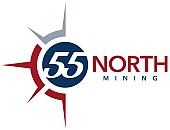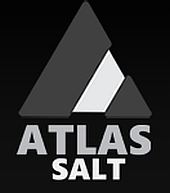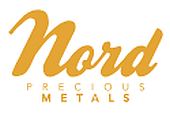 Romios’s North Caribou River samples detect anomalies
Romios’s North Caribou River samples detect anomalies
2022-10-25 16:18 ET – News Release
Mr. Stephen Burega reports
ROMIOS GOLD REPORTS ENCOURAGING RESULTS FROM WORK ON THREE PROJECTS IN NW ONTARIO
Romios Gold Resources Inc. has released the results of its summer fieldwork undertaken on three of the company’s exploration projects in the North Caribou Lake greenstone belt (NCLGB) in Northwestern Ontario. One week was spent exploring each of these claim blocks, with encouraging soil sampling results returned from the North Caribou River gold project and promising geological targets uncovered at Arseno Lake and Markop Lake.
Stephen Burega, president and chief executive officer, stated, “The North Caribou belt is home to Newmont’s world-class Musselwhite gold mine, and Romios is the only company actively exploring a pipeline of grassroots to advanced projects in this greenstone belt.”
He continued, “Moving this significant group of assets forward continues to be a priority for the company, and we are exploring various conversations to bring forward a strong funding partner to build on our successful results.”
North Caribou River (NCR) project
The NCR claims cover seven kilometres of a major regional fault that contains local gold-copper mineralization plus or minus strong alteration and sulphidation.
Romios’s work has identified a series of 10 apparent splay faults coming off this major structure that have not been previously identified or tested. Secondary faults such as these are often much more mineralized than the major regional faults in many gold camps. Soil samples collected over five of the apparent splay faults in 2021 detected a persistent gold anomaly over one splay and scattered anomalies over two others. Follow-up soil sampling was completed over two splays in 2022 with positive results.
Highlights:
- The 2022 NCR soil samples infilled and extended gold anomalies over a fault sampled in 2021, and detected prominent gold anomalies on a new target (VLF No. 2 and No. 1, respectively).
- The three northernmost VLF/fault targets are also anomalous in metals associated with lode gold deposits (copper and antimony), elements such as chlorine that may reflect fault structures and elements such as lanthanum thought to be indicative of sulphide mineralization. The soil anomalies are typically concentrated on the south side of the VLF trend likely due to glacial dispersion.
- Multielement anomalies have now been detected over 200- to 500-metre strike lengths on VLF trends No. 1 to No. 3 with sporadic anomalies on three additional targets. Future work on this project is expected to include soil sampling over the remaining targets, ground VLF surveys to delineate the precise centre of the faults and possible trenching in an effort to define drill targets.
Arseno Lake project
Located just four kilometres from a road in the community of Weagamow Lake, these claims cover the extension of several electromagnetic conductors, and a linear magnetic high westward from the Arseno Lake iron formation hosted a lead-zinc-silver deposit owned by Newmont. Romios’s first geological mapping and outcrop sampling on these claims were completed in June, 2022, and focused on a historically neglected area of schists suspected of being part of a volanogenic-massive-sulphide-type alteration path.
Highlights:
- Several unusual outcrops of kyanite and andalusite schists were located along the EM-MAG target trend. These rocks are very atypical for greenstone belts in the Canadian Shield and may be the result of a hydrothermal alteration system related to the formation of the Arseno Lake deposit.
- Future work on this project will attempt to follow the schists eastward and evaluate several clusters of untested EM conductors between these outcrops and the Arseno Lake deposit.
Markop Lake project
This grassroots project is located immediately east of the Musselwhite gold mine (greater than seven million ounces gold) owned by Newmont. The large claim block covers a highly underexplored Timiskaming age and style volcanosedimentary basin(s) adjacent to a major crustal break, the type of setting that hosts many of the great gold deposits in the Abitibi belt (such as Timmins and Kirkland Lake), such as Red Lake and Pickle Lake. One week was spent in June exploring a small part of this large block, Romios’s first work on these claims.
Highlights:
- Geological mapping confirmed the presence of a belt of coarse conglomerates and sedimentary breccias believed to have formed along the basin-bounding faults. Several outcrops of sheared alkalic volcanics were located within the sedimentary sequence, another rock type typical of Timiskaming basins.
- The favourable basin-bounding faults are now believed to extend for 14 kilometres on the Romios claims, of which only approximately two kilometres have been prospected and mapped to date. Future programs will continue to map and prospect the rest of these prospective faults.
Lundmark-Akow Lake project
This is Romios’s main project in the NCLGB and adjoins the Musselwhite mine property to the north. In recent years, Romios has discovered an extensive VMS system here with several massive sulphide horizons and two types of gold-bearing veins: a series of unusual epithermal-looking calcite veins with sporadic gold mineralization and an impressive quartz-pyrrhotite vein, which returned the best gold intercept known in the belt outside of the Musselwhite property: 4.75 metres of 8.64 grams per tonne gold.
Drilling has also intersected broad zones 16 to 33 m wide of copper-gold stockwork veinlets subcropping over a greater-than-125-metre strike length that have returned encouraging assays (for example, 2.6 g/t Au and 0.39 per cent Cu over a 16.9-metre drilled width). Romios is currently sponsoring an MSc research project on the geology of the VMS system at Lakehead University. This work is expected to provide vectors toward the most favourable portions of the greater-than-11-kilometre-long VMS system prior to work resuming on this project. The drill used in the 2021 program has been left on the claims for a potential follow-up program in 2023.
Background information on the Ontario projects
More detailed descriptions of these projects including maps and figures are presented on the company website.
Quality assurance/quality control
All soil and rock samples were submitted to the ISO 17025-accredited Actlabs laboratory in Thunder Bay, Ont., for assays and multielement analyses. As a matter of procedure, a rigorous quality assurance and quality control program was implemented to ensure reliable assay results by inserting alternating blanks and commercial certified reference material (CRM) standards at every 10th position in the rock sample series, as well as several CRMs in the humus sample series. Humus samples were analyzed by a combination of neutron activation (INAA), generally considered the most accurate of the analytical techniques, and ICP-OES for those few elements for which INAA is not suitable (for example, copper). Sandy soil samples were analyzed by the enzyme leach method.
Qualified person
The technical information in this news release has been reviewed and approved by John Biczok, PGeo, vice-president, exploration, for Romios and a qualified person as defined by National Instrument 43-101. In addition to his extensive experience with several major mining companies exploring for a wide variety of ore deposit types across Canada and India, Mr. Biczok spent 12 years conducting exploration and research at the Musselwhite gold mine in Northwestern Ontario.
About Romios Gold Resources Inc.
Romios is a progressive Canadian mineral exploration company engaged in precious and base metal exploration, focused primarily on gold, copper and silver. It has a 100-per-cent interest in the Lundmark-Akow Lake Au-Cu property plus four additional claim blocks in Northwestern Ontario and extensive claim holdings covering several significant porphyry copper-gold prospects in the Golden Triangle of British Columbia. Additional interests include the Kinkaid claims in Nevada covering numerous Au-Ag-Cu workings and two former producers: the Scossa mine property (Nevada), which is a former high-grade gold producer, and La Corne molybdenum mine property (Quebec). The company retains a continuing interest in several properties, including a 20-per-cent carried interest in five of Honey Badger Mining’s claim blocks in the Thunder Bay silver district of Northwestern Ontario, a 2-per-cent net smelter royalty on McEwen Mining’s Hislop gold property in Ontario and a 2-per-cent NSR on Enduro Metals’ Newmont Lake Au-Cu-Ag property in British Columbia, and the company has signed a definitive agreement with Copperhead Resources Inc. whereby Copperhead can acquire a 75-per-cent ownership interest in Romios’s Red Line property in British Columbia.
We seek Safe Harbor.




























